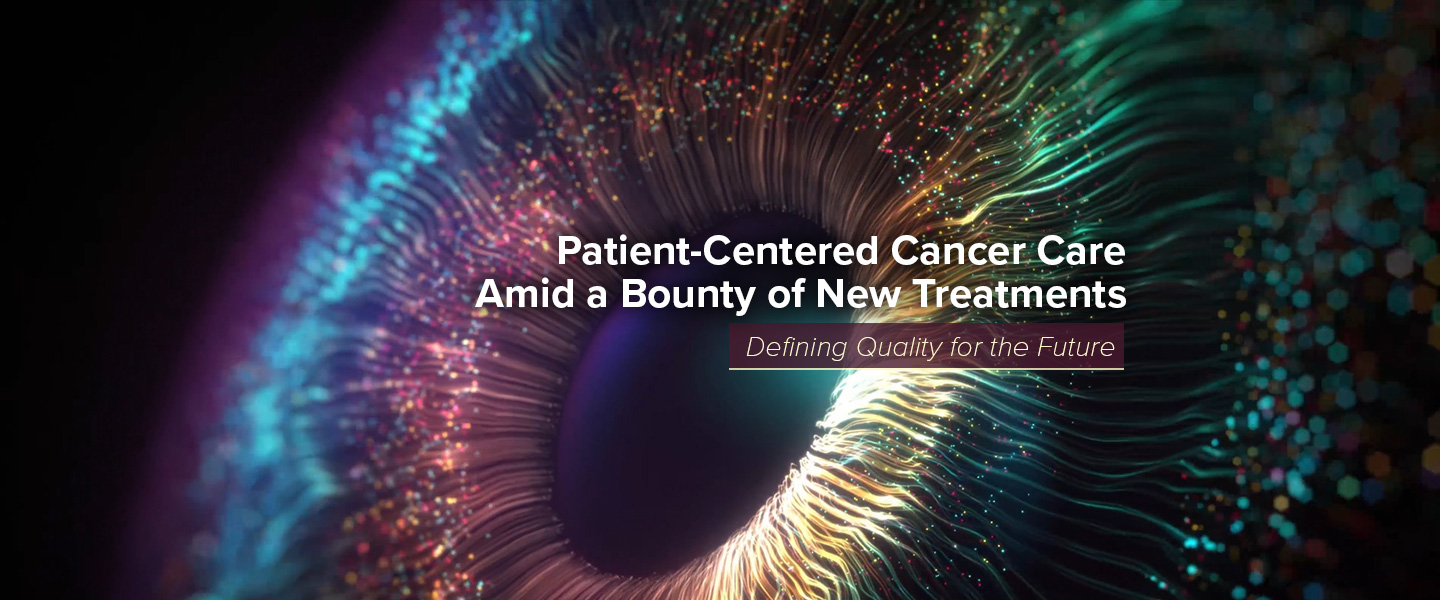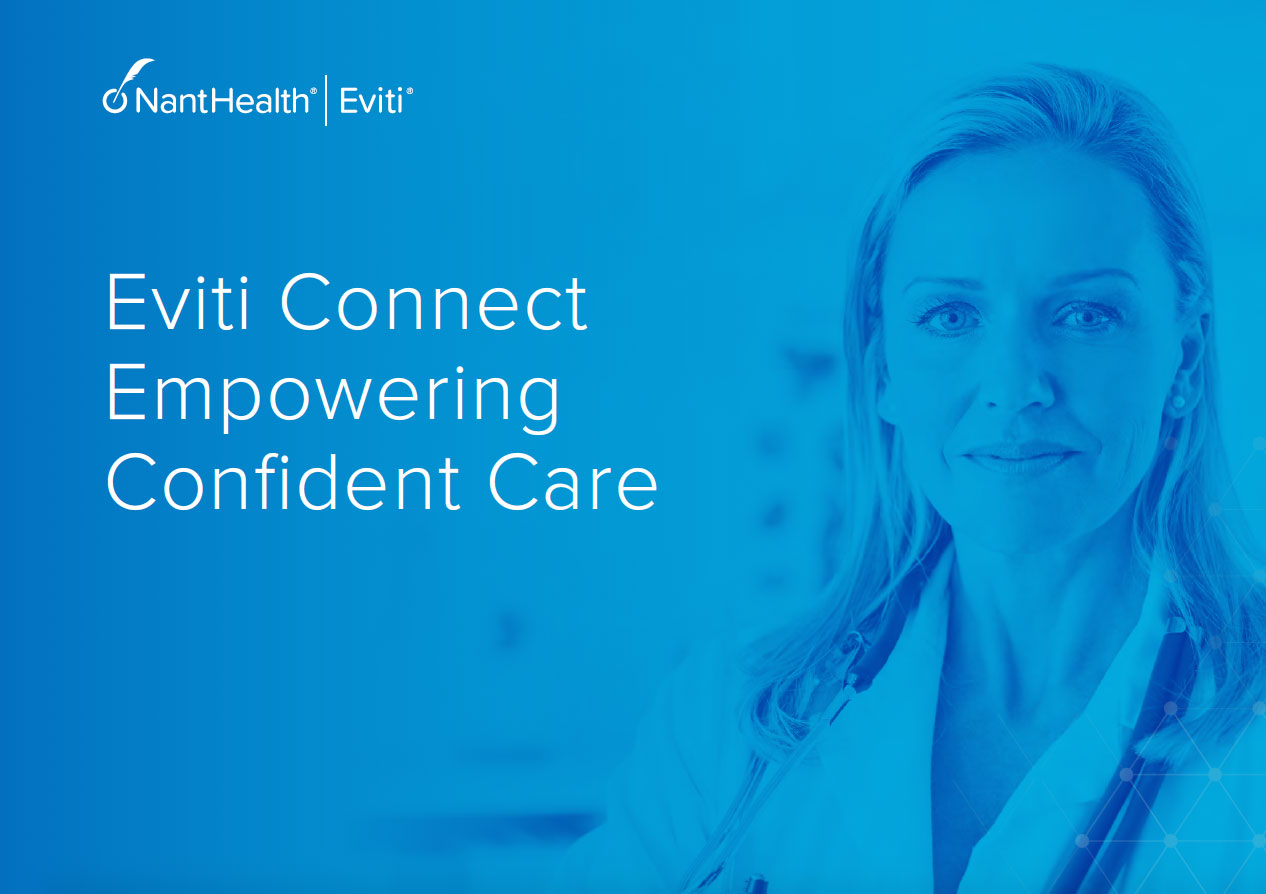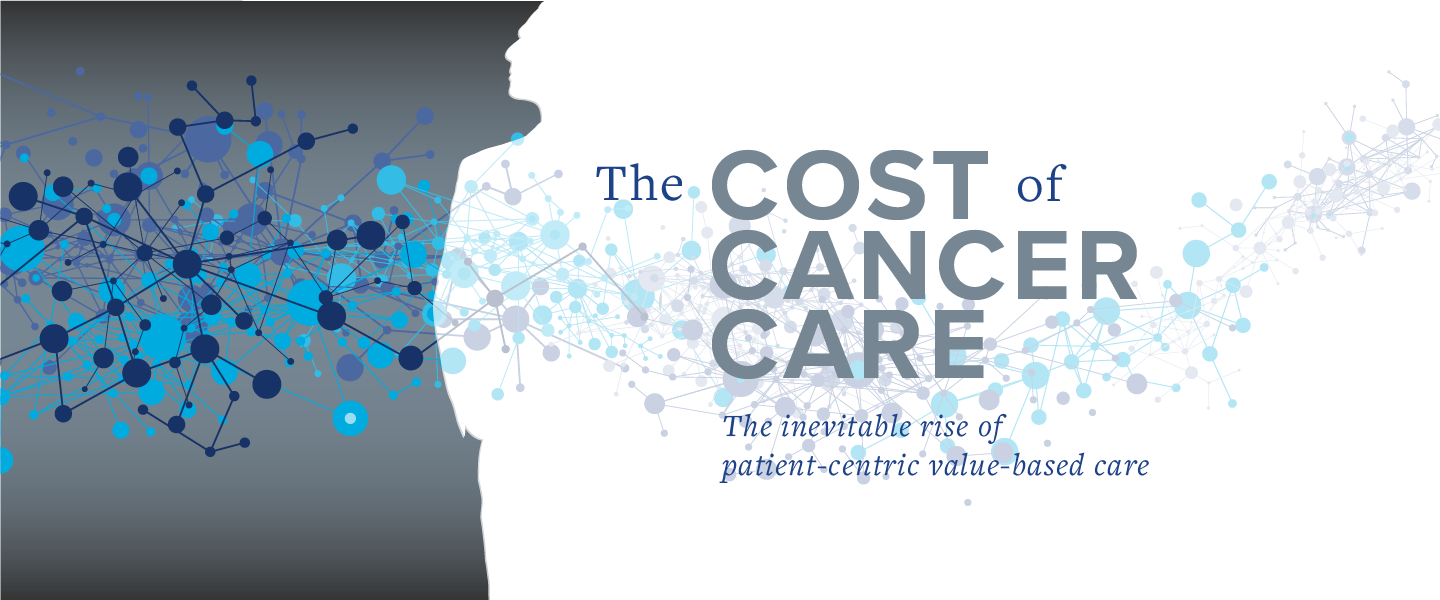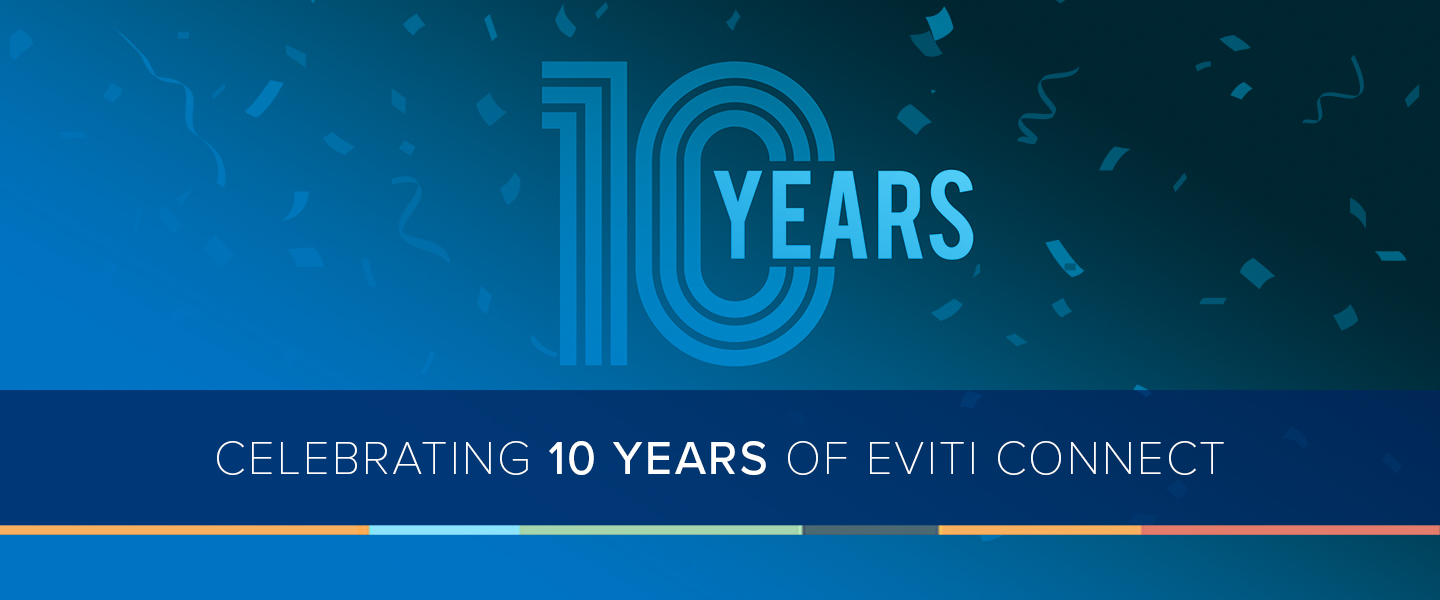 Oncology has a lot on its plate. As cancer care is welcoming a bounty of new treatments, it is absorbing important lessons about improving care delivery. We are increasingly aware of the need to center care on the patient, and as we take advantage of new options and tools, it is critical that the technical not displace the personal.
Oncology has a lot on its plate. As cancer care is welcoming a bounty of new treatments, it is absorbing important lessons about improving care delivery. We are increasingly aware of the need to center care on the patient, and as we take advantage of new options and tools, it is critical that the technical not displace the personal.
A cancer diagnosis brings primal fear and momentous choices. Once the patient registers the cancer diagnosis – an emotional earthquake – they must select, or at least endorse, a treatment path forward. The options are complicated and usually toxic, compared to life before cancer, the least unappealing wins.
Still, choosing a treatment has potential benefits. It is the first, most important step forward, and the treatment discussion can provide the foundation for therapeutic collaboration. If done right, the treatment discussion begins an ongoing conversation in which all participants hear, understand, and trust one another. If done wrong, avoidable problems become inevitable.
Oncologists are first guides and then pilots. They articulate appropriate options, illuminate each option’s consequences, and build a collaboration to select the best fit with the patient’s needs, values, and goals. Once the treatment objective is chosen, the oncologist creates the itinerary, convenes the crew, and directs the expedition safely, adjusting as circumstances change.
Oncology accounts for half of medical cost increases, ballooning as baby boomers get cancer, and drug and device manufacturers focus on their most lucrative market.
That is the ideal. But today, a cancer patient’s treatment may depend on the door they walk through. Advertising will steer them toward modestly beneficial but expensive drug treatments and technology with undistinguished track records; useful patient outcome data are unavailable, and even pain, charted religiously, will be treated as successfully as it was 20 years ago.
These problems don’t just affect cancer patients. We all pay. Oncology accounts for half of medical cost increases, ballooning as baby boomers get cancer, and drug and device manufacturers focus on their most lucrative market. How did we get to this unexpected place? What path forward will get us to a better place? And how do we ensure that the patient’s well-being is the central goal of innovation?
Almost twenty years ago, the Institute of Medicine (IOM) defined quality healthcare, found current practice wanting, and issued a public challenge to improve. Two years earlier, oncology had failed the same test. Medical researchers and administrators took notice. Chatter about health care quality spiked, health services research flourished, and promising technology arrived, including electronic medical records (EMRs) and efficient, precise ways to measure patient quality of life (patient-reported outcomes, or PROs). Later, the Affordable Care Act funded the Patient Centered Outcomes Research Institute (PCORI), which teed up a large new research program with the patient at the titular center. Better, smarter medical care seemed to be right around the corner.
Updates are in, and some news is good. Most newsworthy is the rapid succession of effective new cancer agents with novel biological mechanisms. We have altered clinical practice with procedures and widely adopted supporting infrastructure. Past patient encounters are much more accessible through the EMR, electronic prescribing avoids millions of errors annually, and operating room checklists make procedures safer.
Providers must come to terms with the new agents, indications, and biology, learning to distinguish between newest and best.
But these steps forward come with stumbles. New agents often have specific niches and often come with novel biological qualifiers. Molecular targets may have equivocal significance. Increasingly comprehensive tumor DNA analyses may find driver mutations, benign variation, or “variant of unknown significance.” Providers must come to terms with the new agents, indications, and biology, learning to distinguish between newest and best.
Practice innovation also has downsides. The EMR is a window into patient history and data, but crowds out face-to-face time with the patient, can provoke illogical workarounds, and creates unthinking dependencies. PROs, ideal for tracking symptoms like pain, are largely ignored clinically, an information source hard to integrate into clinical decision making. Knowing that PRO scores go up or down doesn’t clarify what creates favorable trends. The task of translating numerical improvements into the scale of tradeoffs has defeated even researchers who understand from where the numbers come. And shortcomings the IOM identified persist: proven treatments unused, unjustifiable practice variation, unsustainable cost increases, decisions that still bypass patients, and inequities in the healthcare system.
In particular, from the cancer patient’s perspective, the return on our quality of care research investment has been lousy. Talented, well-orchestrated research teams perform ever more sophisticated studies that fill ever more journals, but too few have put patients at the center of the process. We are now aware of financial toxicity, a novel formulation, and we have made steps toward guiding patients through the clinic doors and better coordinating their care. But our agenda is full and will remain so. Cancer care will become even more complex, making focus on the patient, for whom the machinery was developed, a distracted task.
Putting patients at the center of decision-making faces a fundamental problem: medical professionals know a lot more than patients. This information asymmetry not only distorts interactions, making them more lectures than conversation but motivates dysfunctional behavior, “I read this on the internet.” Of course, valid information is available on the internet, but invalid information abounds, and even valid information may not apply because of the patient’s circumstances. The challenge is getting the conversation to be two-way and based on valid, relevant information.
Talented, well-orchestrated research teams perform ever more sophisticated studies that fill ever more journals, but too few have put patients at the center of the process.
Shared decision-making is a known organizing principle to inform patients, increase decision satisfaction and improve patient-doctor communication. When the patient grasps the arguments for and against treatments and understands they can choose, questions are asked aloud, tradeoffs are examined, and conversations, not medical lectures, occur.
Many approaches to make shared decision-making possible have been developed and tested, from carefully constructed informational videos to pre-consultation assessments and note-taking strategies. All are measurably helpful but remain broadly underutilized. For example, a video that simply describes the traumatic, largely ineffectual process of cardiopulmonary resuscitation (CPR) reduces the likelihood of choosing it for oneself four-fold, almost certainly improving a cancer patient’s final days and easing the pain of survivors. Rational policies would include the DVD in the process of documenting patients’ legally binding end-of-life preferences. Few do.
At NantHealth, we are aware of the importance of shared decision-making, as well as the obstacles. A preauthorization finding that a proposed treatment is not evidence-based may be disappointing but could also lead to a discussion of better options with proven clinical benefit. This may be a small step toward the central key to better healthcare quality, patient-centered decision-making.
About the Author
Dr. James Talcott is a Senior Medical Director, Oncology for Eviti. Dr. Talcott is a medical oncologist, outcomes researcher, and former Oncology Care Model Medical Director. At Eviti, he develops strategies and tactics for improving the quality and efficiency of cancer care, helping oncology practitioners deliver evidence-based cancer care. Dr. Talcott’s experience ranges from research methodology, outcomes research, and multidisciplinary collaboration. He is an NIH-funded investigator, peer reviewer and teacher, including 25 years teaching clinical research design and data analysis at Harvard Medical School, where he served as Assistant Professor at the Dana Farber Cancer Institute, and as Associate Professor and Director of the Center for Outcomes Research at the Massachusetts General Hospital Cancer Center, subsequently Professor of Medicine at Albert Einstein and Mount Sinai medical schools. Dr. Talcott earned his MD from the Yale University School of Medicine, a Masters in Epidemiology from the Harvard T.H. Chan School of Public Health, a BA in Philosophy, Politics and Economics from the University of Oxford, and a BS in Biology from Stanford. He resides in New York with his wife, a documentary filmmaker.







